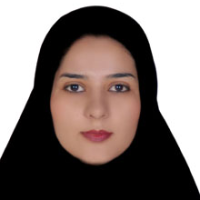Environmental Impact Quotient (EIQ) Evaluation of Used Pesticides in Wheat (Triticum aestivum L.) Fields of Bandar-e-Turkeman County, Golestan Province
Intensification of agriculture along with increasing use of chemical pesticides can have significant environmental effects on other non-target organisms as well as various environments such as air, soil and water. Increasing concerns about the negative effects of pesticide resulted some indicators that measure the environmental risk of each pesticide. One of these indicators is the Environmental Impact Quotient (EIQ), which has been used repeatedly to monitor environmental pesticides in a wide range of agricultural and horticultural fields. The purpose of this study is to investigate the environmental effects of pesticides used in wheat fields in Bandar-e-Turkeman county in 2019-2020 year.
To implement the model, information about the name, amount of consumption and times of application of pesticides used by farmers were collected in the form of questionnaires and face-to-face interviews with 59 farmers. The Environmental Impact Quotient (EIQ) of these pesticides was extracted from version 2021 of the Integrated Pest Management (IPM) site. The environmental effect of used pesticides in each wheat field was obtained from the sum of EIQ of pesticides in the amount of consumption and dose of pesticides per hectare. The calculations of this model were done in Excel version 2013.
The result showed that the final EIQ score for all toxins had the highest impact on the ecological section. Imidacloprid (92.88), Carbendazim (86.00), Acetamiprid (71.95), Cyproconazole (67.00) and Deltamethrin (65.15) had the highest toxicity for the ecological section, respectively. Based on the results, Carbendazim was introduced as the most dangerous and the insecticides Acetamiprid and Imidacloprid were the least dangerous toxin for the farm workers. Calculation of environmental impact of pesticides per hectare showed that there was a high numerical variation among surveyed fields. So that the lowest of index related to fields No. 25, 55 and 42 they had about 6.31, 7.01 and 7.02 environmental impact, respectively. In these fields, no pesticides were used during the wheat growing period and only at the time of planting, carboxin fungicide was used for seeds at the rate of 0.45 and 0.50 kg/ha. The fields No. 40, 10, 30 and 35 recorded with EIQ-FUR equal to 41.49, 33.20, 31.20, 30.85 and 30.67, respectively. In these fields, we were observed the highest environmental impact per hectare. In continue, the distribution map of this index in studied fields was produced. The results showed that there is a different variety in terms of pesticide application in fields, therefore target points can be determine to farmers for reduce of pesticide application and field with high environmental impact.
Among the three components of the EIQ index, including risk to farm workers, consumers, and ecology, the numerical values of these three components can vary depending on location. The current values of this index do not take into account differences in the technology of application or use of personal protective equipment. It can be concluded that the EIQ model requires changes in the direction of localization with the study areas, including the number of farm workers, specifying the type of tools and equipment used and separating the type of developed or developing countries. In general, in these fields, the management of pest, the identification and management of weeds diversity can be effective in controlling the amount of pesticide consumption and reduce environmental risks.
We would like to thank Gorgan University of Agricultural Sciences and Natural Resources, wheat farmers and agricultural Jihad management of Bandar-e-Turkeman county for their cooperation in conducting this research.
- حق عضویت دریافتی صرف حمایت از نشریات عضو و نگهداری، تکمیل و توسعه مگیران میشود.
- پرداخت حق اشتراک و دانلود مقالات اجازه بازنشر آن در سایر رسانههای چاپی و دیجیتال را به کاربر نمیدهد.





